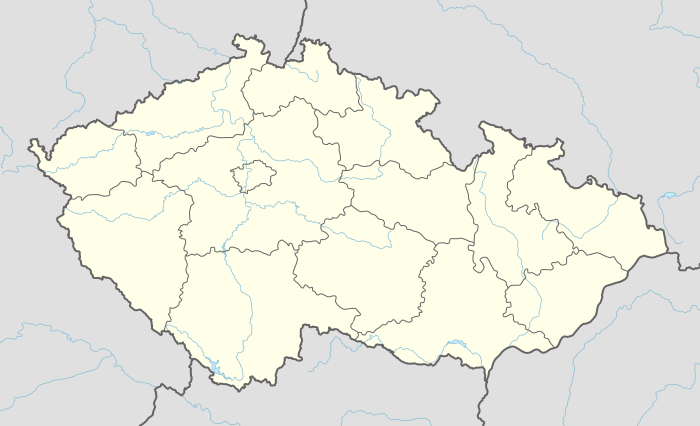Rájec-Jestřebí
Rájec-Jestřebí (German: Raitz-Jestreb) is a town in Blansko District in the South Moravian Region of the Czech Republic.
Rájec-Jestřebí | |
|---|---|
Town | |
 Rájec-Jestřebí | |
 Flag .jpg) Coat of arms | |
 Rájec-Jestřebí Location in the Czech Republic | |
| Coordinates: 49°24′N 16°38′E | |
| Country | Czech Republic |
| Region | South Moravian |
| District | Blansko |
| First mentioned | 1131 |
| Government | |
| • Mayor | Romana Synakieviczová |
| Area | |
| • Total | 15.66 km2 (6.05 sq mi) |
| Elevation | 295 m (968 ft) |
| Population (2012) | |
| • Total | 3,645 |
| • Density | 230/km2 (600/sq mi) |
| Time zone | UTC+1 (CET) |
| • Summer (DST) | UTC+2 (CEST) |
| Postal code | 679 02 |
| Website | www.rajecjestrebi.cz |
Geography
The town is situated in the historic Moravia region, north of the Moravian Karst, at the transition zone between the Bohemian-Moravian and Brno Highlands on the Svitava river. It is located about 7 km (4.3 mi) north of Blansko, on the railway line from Boskovice to Brno. The municipal area comprises the communities of Holešín, Jestřebí, Karolín, and Rájec.
History
Rájec was first documented in an 1131 deed, issued by the Olomouc bishop Jindřich Zdík. Two 13th century strongholds existed at the site which probably were demolished in the struggles between Margrave Jobst of Moravia and his younger brother Prokop and again during the Hussite Wars in 1431. Rájec Castle has later been rebuilt several times and from 1464 served as a residence of the local Lords of Drnovice. The settlement of Jestřebí was first mentioned in 1371, then part of the Bořitov lordship.
In 1570 the castle was rebuilt in a Renaissance style. The estates changed hands several times and in 1661 were awarded to the Austrian noble House of Roggendorf by Emperor Leopold I. The Lords of Roggendorf were elevated to Imperial counts (Reichsgrafen) in 1667, they founded the neighbouring villages of Krasová (Rogendorf) in 1717 and Vysočany (Mollenburg) in 1724. In 1746 Rájec Castle was again destroyed by fire, and the premises were sold to the Counts of Salm-Reifferscheid in 1763, who had the Baroque chateau erected.
The present-day municipality was established in 1850. After World War II, the Salm-Reifferscheid-Raitz family was disseized and expelled.